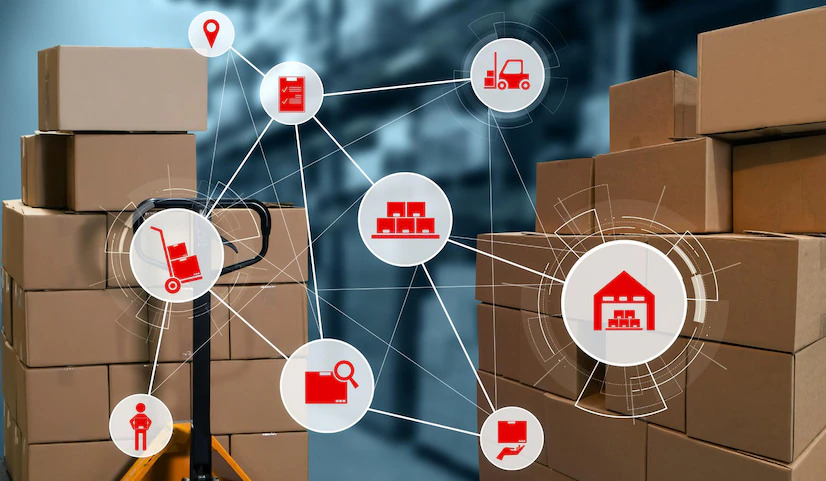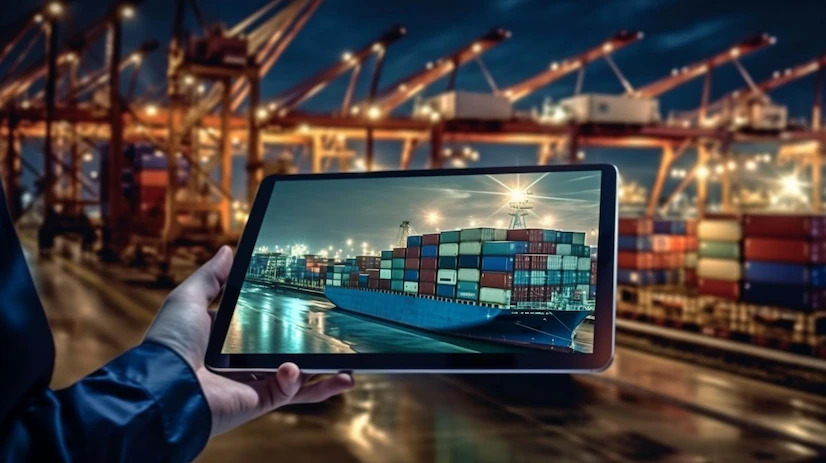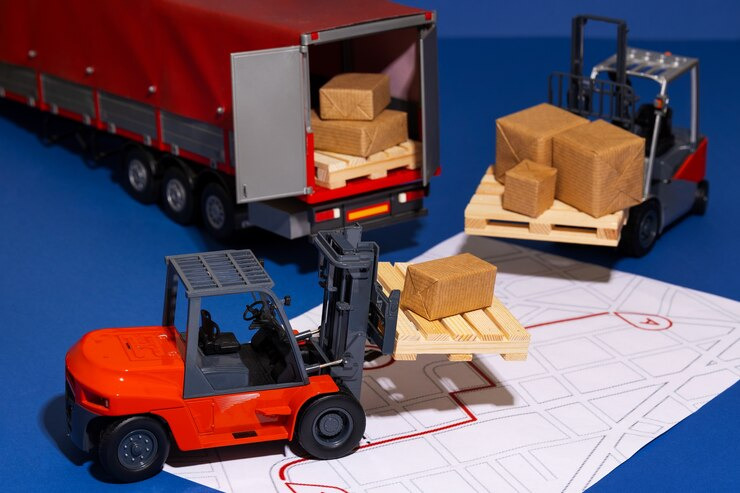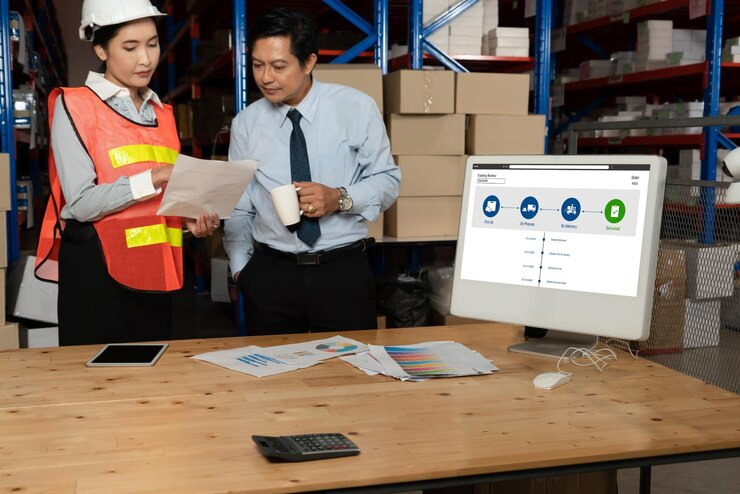drop load
China is one of the world’s largest exporters of goods, ranging from electronics, clothing, furniture, toys, and more. However, importing goods from China can also be challenging, especially for small and medium-sized businesses that lack the resources and expertise to handle the complex and often unpredictable import process. In this article, we will discuss some of the challenges of importing goods from China and provide some tips on how to overcome them and achieve efficiency in your import operations.
The challenges of importing goods from China

Importing goods from China involves many steps and factors, such as finding reliable suppliers, negotiating prices and terms, arranging transportation and logistics, complying with trade regulations and customs procedures, and ensuring product quality and safety. Some of the common challenges that importers face when importing goods from China are:
Understanding the importance of efficiency in the import process

- Language and cultural barriers: Communicating with Chinese suppliers can be difficult due to language differences and cultural nuances. Misunderstandings and miscommunications can lead to delays, errors, disputes, and dissatisfaction.
- Quality and compliance issues: Chinese products may not meet the quality standards and specifications of the destination market, or they may not comply with the relevant laws and regulations. Importers may face the risk of receiving defective, damaged, counterfeit, or substandard products, or they may face legal consequences or penalties for violating trade rules or consumer rights.
- Shipping and logistics problems: Shipping goods from China can be costly, time-consuming, and risky. Importers have to deal with various modes of transportation, such as air, sea, rail, or road, and coordinate with multiple parties, such as freight forwarders, carriers, customs brokers, and warehouse operators. Importers may encounter delays, damages, losses, thefts, or accidents during the shipping process, which can affect their delivery time and customer satisfaction.
- Tariffs and taxes: Importing goods from China may incur tariffs and taxes, depending on the type, value, and origin of the products, and the trade agreements and policies of the destination country. Importers have to pay these fees to the customs authorities, which can increase their import costs and reduce their profit margins.
Efficiency is the key to success in the import business. By improving the efficiency of your import process, you can:
- Save time and money: By streamlining your supply chain, optimizing your packaging and shipping methods, and using technology to enhance your import operations, you can reduce your import costs, speed up your delivery time, and increase your cash flow.
- Increase your competitiveness and profitability: By negotiating favorable terms with your suppliers, leveraging economies of scale through bulk ordering, and utilizing third-party logistics providers, you can improve your product quality, lower your product prices, and expand your market share.
- Avoid risks and problems: By staying updated on trade regulations and customs procedures, and ensuring compliance and quality of your products, you can avoid legal issues, penalties, disputes, and customer complaints.
Tip 1: Streamline your supply chain

One of the ways to improve your import efficiency is to streamline your supply chain, which is the network of activities and entities involved in the production, distribution, and delivery of your products. By streamlining your supply chain, you can simplify your import process, reduce your operational complexity, and eliminate unnecessary costs and delays. Some of the steps you can take to streamline your supply chain are:
- Find reliable and reputable suppliers: The quality and performance of your suppliers can have a significant impact on your import efficiency. You should conduct thorough research and due diligence on your potential suppliers, such as checking their background, reputation, credentials, certifications, references, and reviews. You should also visit their factories, inspect their products, and verify their production capacity, quality control, and delivery time. You should also establish clear and consistent communication with your suppliers, and maintain a long-term and mutually beneficial relationship with them.
- Consolidate your orders and shipments: Instead of placing small and frequent orders and shipments, you should consolidate your orders and shipments into larger and fewer ones. This can help you reduce your shipping costs, simplify your logistics, and take advantage of economies of scale. You should also coordinate your orders and shipments with your suppliers, and plan ahead for peak seasons, holidays, and unexpected events that may affect your import schedule.
- Optimize your inventory management: Inventory management is the process of controlling the quantity, location, and movement of your products. By optimizing your inventory management, you can avoid overstocking or understocking your products, which can cause waste, spoilage, obsolescence, or stockouts. You should also monitor your inventory levels, demand patterns, and sales trends, and adjust your orders and shipments accordingly. You should also use technology, such as barcode scanners, RFID tags, or inventory management software, to track and manage your inventory more efficiently and accurately.
Tip 2: Optimize your packaging and shipping methods

Another way to improve your import efficiency is to optimize your packaging and shipping methods, which are the ways you pack and transport your products. By optimizing your packaging and shipping methods, you can protect your products, reduce your shipping space and weight, and lower your shipping costs and time. Some of the steps you can take to optimize your packaging and shipping methods are:
drop load
- Choose the right packaging materials and design: The packaging materials and design of your products can affect their safety, durability, and appearance. You should choose the packaging materials and design that are suitable for your products, such as cardboard boxes, plastic bags, bubble wrap, foam, or pallets. You should also consider the environmental and regulatory factors of your destination market, such as the climate, humidity, temperature, or recycling requirements. You should also label your packages clearly and correctly, with the necessary information, such as the product name, description, quantity, weight, origin, destination, and customs declaration.
- Choose the right shipping mode and carrier: The shipping mode and carrier of your products can affect their speed, cost, and reliability. You should choose the shipping mode and carrier that are appropriate for your products, such as air, sea, rail, or road, and express, standard, or economy. You should also compare the prices, services, and reputations of different shipping modes and carriers, and select the one that offers the best value and quality. You should also track and monitor your shipments, and communicate with your shipping partners, to ensure your products arrive on time and in good condition.
Tip 3: Use technology to enhance your import operations

Technology is a powerful tool that can help you enhance your import operations, by automating, integrating, and optimizing your import processes and activities. By using technology, you can increase your productivity, accuracy, and transparency, and reduce your errors, risks, and costs. Some of the technologies you can use to enhance your import operations are:
drop load
- E-commerce platforms: E-commerce platforms are online platforms that allow you to buy and sell products online, such as Alibaba, Amazon, or Shopify. By using e-commerce platforms, you can access a large and diverse market of suppliers and customers, and conduct your import transactions more conveniently and efficiently. You can also use e-commerce platforms to showcase your products, manage your orders and payments, and handle your customer service and feedback.
- Cloud computing: Cloud computing is a technology that allows you to access and store data and applications over the internet, rather than on your own devices or servers. By using cloud computing, you can access and share your import data and documents anytime and anywhere, and collaborate with your import partners more easily and securely. You can also use cloud computing to backup and protect your import data and documents, and reduce your IT costs and maintenance.
- Artificial intelligence: Artificial intelligence is a technology that enables machines to perform tasks that normally require human intelligence, such as learning, reasoning, and decision making. By using artificial intelligence, you can analyze and process large and complex amounts of import data and information, and generate insights and recommendations that can help you improve your import performance and strategy. You can also use artificial intelligence to automate and optimize your import tasks and processes, such as inventory management, demand forecasting, pricing, and quality control.
Tip 4: Negotiate favorable terms with your suppliers

Negotiating favorable terms with your suppliers is another way to improve your import efficiency, as it can help you obtain better prices, quality, and service from your suppliers, and reduce your import risks and liabilities. Some of the terms you can negotiate with your suppliers are:
drop load
- Price: Price is the amount of money you pay to your suppliers for your products. You should negotiate the best price possible with your suppliers, by comparing the prices of different suppliers, and considering the factors that affect the price, such as the product quality, quantity, specifications, and delivery time. You should also ask for discounts, incentives, or rebates from your suppliers, especially if you place large or regular orders, or pay in advance or on time.
- Payment: Payment is the method and timing of how you pay to your suppliers for your products. You should negotiate the most favorable payment terms with your suppliers, by choosing the payment method that is convenient and secure for both parties, such as cash, credit card, bank transfer, letter of credit, or escrow. You should also negotiate the payment timing that is beneficial for your cash flow and risk management, such as paying in installments, or paying after inspection or delivery.
- Delivery: Delivery is the process and time of how your products are transported and delivered to you by your suppliers. You should negotiate the optimal delivery terms with your suppliers, by choosing the delivery method that is fast and reliable for your products, such as FOB, CIF, or DDP. You should also negotiate the delivery time that is realistic and flexible for your import schedule, and avoid peak seasons, holidays, or unexpected events that may cause delays or disruptions.
- Warranty: Warranty is the guarantee and service that your suppliers provide to you for your products, in case of any defects or damages, or if they fail to meet your expectations or requirements. You should negotiate the best warranty terms with your suppliers, by asking for a clear and detailed warranty policy, that covers the warranty period, scope, conditions, and procedures. You should also ask for after-sales service and support from your suppliers, such as repair, replacement, refund, or compensation.
Tip 5: Leverage economies of scale through bulk ordering

Leveraging economies of scale through bulk ordering is another way to improve your import efficiency, as it can help you lower your unit cost, increase your bargaining power, and reduce your inventory risk. Economies of scale refer to the phenomenon where the average cost of producing or purchasing a product decreases as the quantity increases. By ordering in bulk, you can:
drop load
- Lower your unit cost: By ordering in bulk, you can reduce your fixed costs, such as the setup, administration, and transaction costs, and spread them over a larger number of units. You can also reduce your variable costs, such as the material, labor, and shipping costs, by taking advantage of discounts, incentives, or bulk rates offered by your suppliers or shipping partners.
- Increase your bargaining power: By ordering in bulk, you can increase your bargaining power and influence over your suppliers, and negotiate better terms and conditions, such as price, payment, delivery, and warranty. You can also increase your market share and competitiveness, by offering lower prices and higher quality to your customers.
- Reduce your inventory risk: By ordering in bulk, you can reduce your inventory risk, which is the risk of losing money due to changes in the market demand, price, or quality of your products. You can reduce your inventory risk by ordering in bulk when the demand is high, the price is low, or the quality is stable, and avoiding ordering in bulk when the demand is low, the price is high, or the quality is uncertain.
Tip 6: Utilize third-party logistics providers

Utilizing third-party logistics providers is another way to improve your import efficiency, as it can help you outsource and delegate some of your import tasks and processes to professional and experienced service providers, and focus on your core competencies and value-added activities. Third-party logistics providers are companies that provide various logistics services, such as transportation, warehousing, distribution, customs clearance, and documentation, to importers and exporters. By utilizing third-party logistics providers, you can:
drop load
- Save time and money: By outsourcing some of your import tasks and processes to third-party logistics providers, you can save time and money that you would otherwise spend on performing these tasks and processes yourself, such as hiring and training staff, buying and maintaining equipment, renting and operating facilities, and complying with regulations and procedures. You can also benefit from the expertise, experience, and network of third-party logistics providers, and access better prices, services, and solutions.
- Increase your flexibility and scalability: By delegating some of your import tasks and processes to third-party logistics providers, you can increase your flexibility and scalability, and adapt to the changing market conditions and customer demands. You can adjust your import volume, frequency, and destination, and choose the most suitable logistics services and options, according to your needs and preferences. You can also expand or contract your import operations, without having to invest in or dispose of your own resources and assets.
- Reduce your risks and liabilities: By transferring some of your import tasks and processes to third-party logistics providers, you can reduce your risks and liabilities, and share them with your service providers. You can reduce your operational risks, such as delays, damages, losses, or accidents, by relying on the performance and reliability of third-party logistics providers. You can also reduce your legal risks, such as violations, penalties, or disputes, by complying with the regulations and procedures of third-party logistics providers.
Tip 7: Stay updated on trade regulations and customs procedures

Staying updated on trade regulations and customs procedures is another way to improve your import efficiency, as it can help you avoid legal issues, penalties, or delays, and ensure compliance and smoothness of your import operations. Trade regulations and customs procedures are the rules and processes that govern the import and export of goods, such as tariffs, taxes, quotas, licenses, permits, certificates, and inspections. By staying updated on trade regulations and customs procedures, you can:
drop load
- Prepare your import documents and fees: By staying updated on trade regulations and customs procedures, you can prepare your import documents and fees, which are the documents and fees that you need to submit and pay to the customs authorities, to clear your products and enter the destination market. You should prepare your import documents and fees accurately and completely, and submit and pay them on time, to avoid errors, rejections, or fines. You should also keep copies and records of your import documents and fees, for future reference or verification.
- Comply with your import standards and requirements: By staying updated on trade regulations and customs procedures, you can comply with your import standards and requirements, which are the standards and requirements that your products need to meet, to ensure their quality, safety, and suitability for the destination market. You should comply with your import standards and requirements, such as the product specifications, labeling, packaging, testing, and certification, to avoid rejections, returns, or complaints. You should also monitor and verify your product quality and compliance, through inspections, audits, or feedback.
- Take advantage of your trade agreements and policies: By staying updated on trade regulations and customs procedures, you can take advantage of your trade agreements and policies, which are the agreements and policies that facilitate and regulate the trade between different countries or regions, such as the free trade agreements, preferential tariffs, or duty exemptions. You should take advantage of your trade agreements and policies, by checking your product eligibility, origin, and value, and claiming your benefits and privileges, to reduce your import costs and increase your import competitiveness.
drop load
Conclusion
Importing goods from China can be challenging, but also rewarding, if you know how to do it efficiently. By following the tips above, you can improve your import efficiency, and achieve your import goals and objectives. If you need more help or information on importing goods from China, you can contact us at Drop Load, and we will be happy to assist you. Drop Load is a leading e-commerce platform and logistics service provider, that specializes in importing goods from China. We offer a wide range of products, services, and solutions, to help you import goods from China efficiently and effectively.
Contact Us Now
drop load





